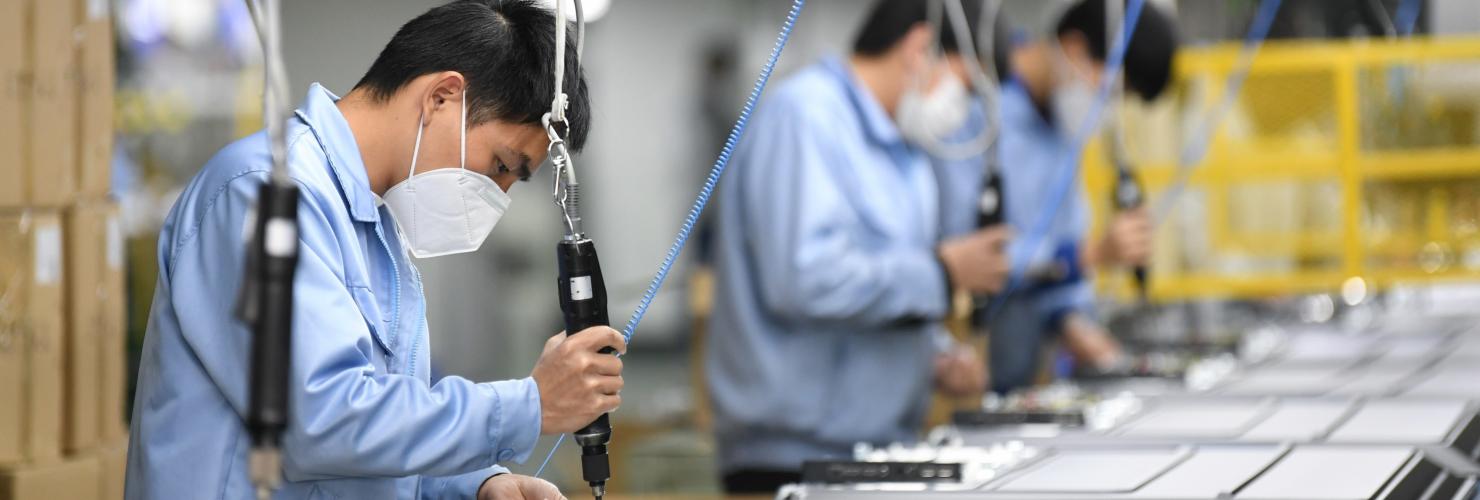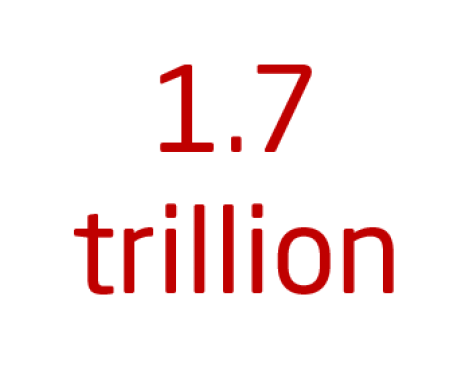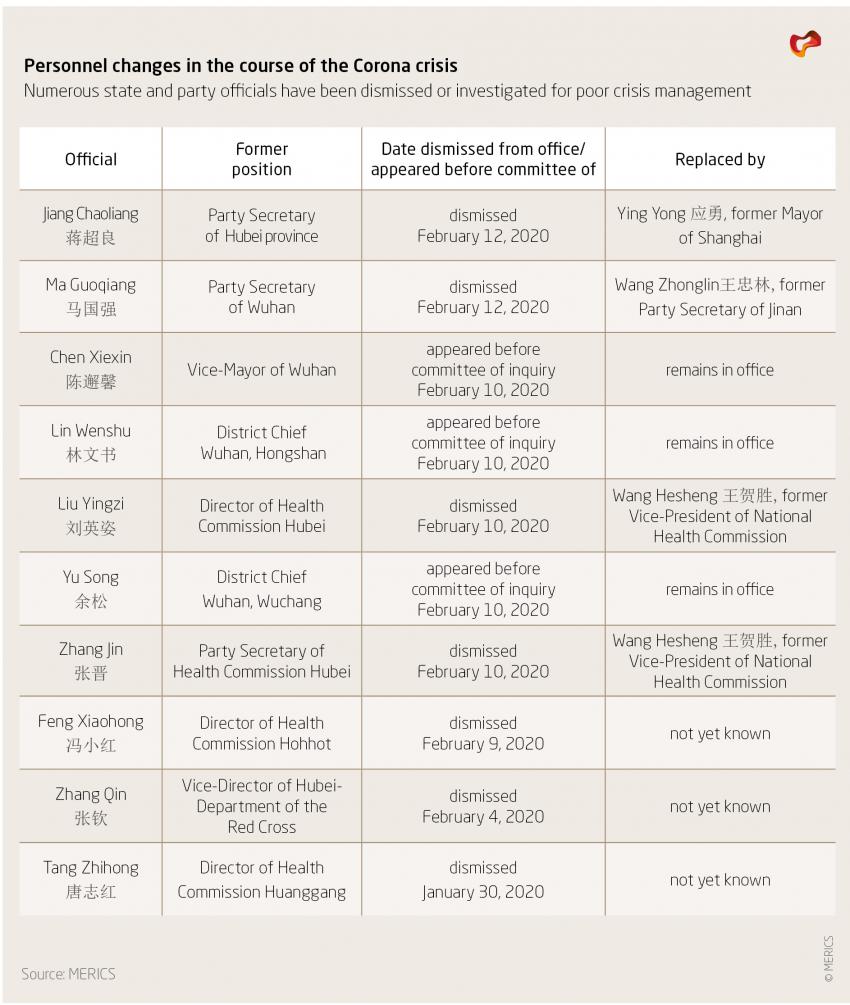

Effects of coronavirus ripple through economies
China Update 3/2020
METRIX
China’s central bank pumped 1.7 trillion yuan – the equivalent of around 222 billion euros – into the country’s economy at the start of February to restore confidence lost as the Coronavirus epidemic took hold. It is the largest amount the People’s Bank of China (PBoC) has ever made available to banks in one week.
Topic of the week
Effects of coronavirus ripple through economies
European companies are bracing for the ripple effects of China’s supply chain disruptions to hit the region. The slow resumption of production in China this week means many European manufacturers face uncertainty over the supply of crucial Chinese components as the Coronavirus spreads. Production in Europe could be severely disrupted if their Chinese partners can’t get back to work soon – Italian car maker Fiat already announced it might have to idle one of its four European plants.
Despite last week’s expectation that most of China’s factories would reopen on Monday February 10, manufacturing operations around the country are this week struggling to ramp up their production to pre-outbreak levels. While some manufacturing heavyweights received the government’s green light to reopen their plants, many production facilities remain barely operational.
Major electronics contract manufacturer Foxconn reportedly only saw around 10% of its workforce return to its facilities and the company now seems set to keep its production suspended for an additional week. Some Chinese media even report that the company will only fully reopen at the beginning of March. Some foreign automotive manufacturers like Mercedes-Benz and Ford have started reopening their Chinese facilities. But many companies are taking a cautious approach by getting only a select number of assembly lines up and running again. A key concern for the government is the increased bankruptcy risk for small and medium sized companies with only limited liquidity.
It remains uncertain just how far-reaching the damage of Chinese supply-chain disruptions will be for companies in Europe and other parts of the world. Despite the Chinese government’s efforts to get companies and factories to resume work, many influencing factors remain outside of its control. It is unclear how soon employees will be able or willing to travel back to their workplaces amid continued travel restrictions, quarantine requirements and health concerns. This uncertainty affects all areas, not just supply-chain logistics, and it is becoming clear that a return to normality will take some time.
With factories shuttered, and people staying at home and not spending money, the economy is hurting. Stock markets and the currency both took a dive in January but recovered once Chinese authorities started responding with monetary stimulus. The People’s Bank of China (PBOC) intervened heavily since the beginning of the outbreak. In February China’s central bank announced liquidity injection of 1.7 trillion.
National Development and Reform Commission (NDRC), Beijing’s macroeconomic management agency, said it would make it easier for companies to borrow from investors by simplifying bond issuance. In an interview, NDRC deputy chair Zeng Gang said both monetary and fiscal policy would be employed counter-cyclically to support the economy. Stimulus is necessary and likely to continue. But there are limits to what Beijing can do given that the government deficit is increasing, and inflation is rising. Also, loosening banks’ reserve requirements could expose them to future financial risks.
News in brief
- US-China phase 1 trade deal - China to halve tariffs on some US imports in spite of corona crisis
- Face masks - Chinese Carmakers and other branches now making face masks
- China’s IT avant-garde - Alibaba leads Chinese retreat from Silicon Valley
- 5G ‘made in Europe’ - Huawei announces plans for manufacturing bases in the EU
- PwC record - China’s bad debt hit $1.5 trillion USD by the end of 2019
China and the world
Symbolic visit in midst of crisis: Cambodia’s Prime Minister meets Xi
The Chinese leadership was pleased to welcome Cambodian head-of-government Hun Sen, the first foreign leader to visit Beijing since the Coronavirus spread from Wuhan to other parts of the country. After numerous countries suspended flights to China and evacuated citizens due to the spread of the epidemic, the Cambodian Prime Minister’s arrival in Beijing on 5 February was heavy on symbolism.
Hun Sen met party and state leader Xi Jinping, who had not appeared in public for eight days prior. "A friend in need is a friend indeed as the Cambodian people stand with the Chinese people at this special moment," Xi said. Hun Sen suggested other countries had panicked in the face of the virus. In doing so, Cambodia’s Prime Minister underlined his continued willingness to act as an advocate for Beijing within ASEAN, some of whose members are critical of China’s South China Sea policies.
Some Southeast Asian countries such as Cambodia, Thailand, Myanmar and the Philippines are being criticized for not doing enough to protect their populations for fear of upsetting Beijing. For its part, the Chinese leadership banned travel groups from visiting these and other countries during the Chinese Spring Festival holiday. Coronavirus infections in Southeast Asia are so far relatively low. As of 12 February, 33 cases had been reported in Thailand, three in the Philippines, one in Cambodia and none in Myanmar.
MERICS analysis: “Prior to the outbreak of the Coronavirus, Cambodia was already under strain from illicit Chinese gambling and property speculation. Hun Sen’s visit to China has the potential to further distract from the real need for Cambodia to enhance its own regulatory capacities, including in the crucial area of public health.” Matt Ferchen, Head of "Global China" Research, at MERICS.
Taiwan’s absence from WHO raises questions
The Coronavirus crisis has sparked a debate about Taiwan gaining access to one of the many international institutions from which it is excluded on account of Beijing’s “One China” policy. Andrew Bremberg, US ambassador to the UN in Geneva, demanded the World Health Organization be allowed to “engage directly with Taiwan public health authorities” dealing with the virus there.
Taiwan is excluded from the WHO due to China’s pressure, which means Taipei can’t get or volunteer first-hand information and is dependent on China as a conduit. Taiwan last week accused Beijing of providing the WHO with incorrect information about Coronavirus on the island. China claims communication with Taiwan has been smooth to ensure the “well-being of compatriots.” It has accused Taiwan of using the virus to push for “Taiwan independence.” Regardless of the outcome, the dispute highlights a glaring gap in the international public health and epidemic-prevention system.
News in brief
- MSC 2020 - focus on geopolitical shifts and implications of different value systems
- Independent researcher? - Harvard professor charged with hiding China ties and payments
- EU-China - Germany, France, Italy and Poland urge EU to reform competition policy
Politics, Society and Media
Grief and protests after whistleblower doctor dies
The death of doctor Li Wenliang from Wuhan led to outpourings of grief and protest in China’s highly regulated social media but also in the offline world. The 34-year-old had been one of the first people to warn about the outbreak of a SARS-like virus via the internet late December – for which he was formally reprimanded by the police for “making false statement”. Although Li had consequently been infected with the coronavirus, he continued to help treat other sufferers. He died in the night onto 7 February.
News of Li’s death was reported on social media before the party-state media did. Chinese netizens praised “the hero of Wuhan” and “the hero who told the truth” – and vented their anger that the government had wasted valuable time to fight the virus by suppressing information about it. Many used the opportunity to demand freedom of speech – until censors intervened. On the night of Li’s death, an online appeal asked people to turn off their lights, shine flashlights out of their windows and whistle in collective remembrance. People laid flowers outside the hospital in which he had died.
Ten Wuhan university professors and a group of professors from Beijing University published open letters, demanding, among other things, that Li's reprimand be withdrawn by the police. Following the example of protestors in Hong Kong, the Beijing academics made five demands, including the introduction of free speech under Article 35 of the Chinese Constitution and an end to social-media censorship. State media tried to discredit the moves by claiming they were the work of hostile foreign powers.
China’s leaders seem to be aware of the protests Li’s death could yet trigger and are placing the blame for his passing on local authorities. The Beijing-based National Supervision Commission has sent investigators to Wuhan to look into Li's whistleblowing reprimand. State news agency Xinhua said the way authorities had dealt with Li Wenliang should prompt society to reflect – and by implication not Beijing. Meanwhile, Li's family was promised 785,020 yuan (EUR 103,000) in compensation.
Big Data and AI enlisted to fight virus
Chinese tech companies are currently deploying an assortment of technological solutions to help fight corona virus on the ground. Tech giant Baidu, for example, had previously unveiled a system that uses artificial intelligence (AI) to measure body temperatures by directing an infrared sensor onto the foreheads of moving passengers, while Shanghai Lingzhi Technology had developed a cleaning robot that sprays disinfectant on self-navigated routes in hospitals nonstop for three hours.
Xinhua news on 9 February said the Central Network Office (中央网信办) was allowing the use of personal data on the grounds of “epidemic disease prevention.” Tech firms and local authorities were given access to sensitive personal information on condition everything is deleted after the epidemic prevention is completed. But remains to be seen whether big data and AI can help authorities to put preemptive measures in place – Baidu has a constantly updated map of all reported Coronavirus incidents – or perhaps even uncover more inefficiencies in authorities’ response to the epidemic.
News in brief
- Xi is back - Xi is being shown on media again after a time of noticeable “absence”
- Activist disappeared - self-proclaimed “citizen journalist” disappears in Wuhan
- Hong Kong - medical workers end strike, but still demand complete border closure with China

